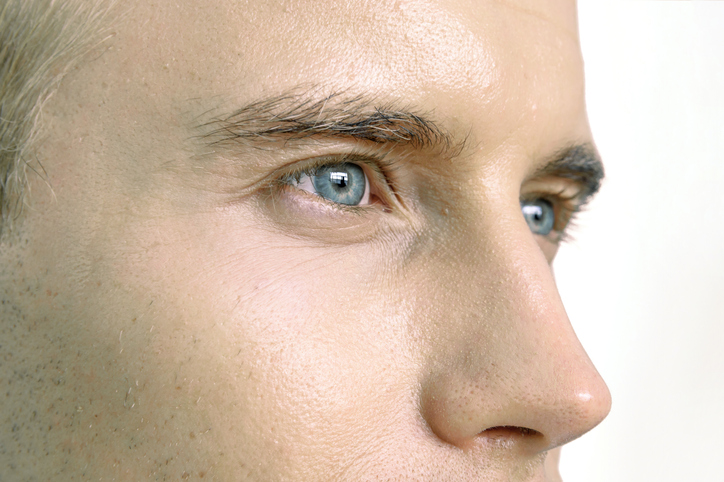Complications of LASIK | LASIK Eye Surgery Risks
 LASIK, PRK, and ReLex SMILE are probably the safest major surgeries performed on the human body. But any surgery, even with our advanced laser technology and competent surgeon and staff, carries risk. The risks of LASIK for causing severe visual problems are extremely low, and when complications of LASIK ensue, they are generally amenable to improvement.
LASIK, PRK, and ReLex SMILE are probably the safest major surgeries performed on the human body. But any surgery, even with our advanced laser technology and competent surgeon and staff, carries risk. The risks of LASIK for causing severe visual problems are extremely low, and when complications of LASIK ensue, they are generally amenable to improvement.
Upon arrival for your free laser vision correction consultation, all LASIK eye surgery risks and benefits are clearly disclosed to each patient in a detailed video presentation. Following the presentation a consent form will be provided to the patients re-capping (or summarizing) the information provided in the video. Any additional questions or information a patient may require can be discussed directly with the physician during the consultation or prior to surgery.
If you are interested in learning more about LASIK eye surgery risks, potential complications of LASIK, or if you’re interested in scheduling an appointment in North Canton, Canfield or Alliance OH, contact Roholt Vision Institute today.
Contact Us Today to Schedule a Consultation
DRY EYE (2-6%)

Dry eye can be aggravated or induced by LASIK or PRK. Since dry eye is more common in perimenopausal women, incidence after LASIK/PRK is highest in this group. Other factors contributing to dry eye include medications (birth control pills, antihypertensives, and antidepressants), and diseases such as thyroid, diabetes, and arthritis. A recent study by Steve Schallhorn, MD on thousands of LASIK patients showed that the incidence of dry eye was more related to the aging process than to LASIK.
The method of performing the LASIK flap can contribute to dryness. Recent evidence indicates that a thinner flap, as performed with a femtosecond laser, such as the Visumax or Ziemer as used at RVI causes less interference with the corneal nerves involved in tear formation. The incidence of dry eye is believed to be lower with Relex SMILE because the laser pocket opening is smaller than LASIK. Also PRK may cause less dryness than LASIK.
Slower recovery after LASIK can be expected in dry eye patients, sometimes with a slight reversal of effect (regression). Liberal treatment with eye lubricants, mucin-enhancing vitamins, or plugging of the tear drain ducts can be helpful while the tear production recovers after surgery.
If you feel you may have a problem with dryness, contact us so we can evaluate your tear quality prior to LASIK.
MICROSTRIAE (Mild: 1-3%, Moderate-Severe: 0.1%)
These are subtle lines in the top layer of the flap as it drapes over the area treated by the laser. Mild striae usually cause little effect on vision.
Moderate/severe striae, or “macrostriae,” are caused by squeezing, rubbing, or trauma in the early postoperative period. They can be treated and smoothed out by an experienced surgeon.
The ReLex SMILE procedure has no flap, only a small laser incision, so microstriae are unlikely. PRK has no flap and thus no microstriae are possible.
UNDER/OVERRESPONSE (2-6%)
These are not actually complications of LASIK but can require retreatment. Variation in the individual response of human tissue to the laser treatment, along with individual healing factors, is the cause. Underresponse or regression of effect is more common in patients with dry eye. Retreatment is usually done after 2-3 months.
The Zeiss MEL-80 is very accurate and has lowered the retreatment rate by 60% compared to the broad beam lasers.
DIFFUSE LAMELLAR KERATITIS (Mild: 3%)
Inflammation can occur under the flap. Rarely, this can be due to bacteria (infectious), but usually the cause is unknown, and may be an allergic reaction. DLK is generally mild, has little effect on vision, and resolves within 1-2 weeks when appropriately treated.
In rare cases (<0.05%) DLK can progress to central toxic keratopathy (CTK) which can result in a corneal scar, blurred vision and refractive changes.
Some of the high volume, discount laser centers have had epidemics of DLK. DLK is also more common with the use of femtosecond lasers or “bladeless, all-laser LASIK.” This occasionally requires intense steroid treatment. This is due to mild “tissue bridges” resulting in inflammation. At Roholt Vision Institute, with the solid-state Visumax and Ziemer lasers and strict adherence to sterile technique, DLK has only been mild and sporadic, with no serious sight threatening complications.
NIGHT GLARE/HALOS (Mild: 4%, Moderate: 2%)
Some patients, especially with higher degrees of myopia have night glare/halos from car or streetlights with spectacles or contact lenses. This glare can continue after LASIK, is usually worse for 1 -2 months, then gradually resolves. One study showed that fewer patients had glare and halos after LASIK than preoperatively.* Many patients having LASIK at RVI report that night driving is better than before the procedure.
Most of the serious problems with glare/halos are a result of treatment by inexperienced surgeons, where the treatment zone is off-center.
The Zeiss MEL-80 laser was chosen because its use in LASIK results in a very low incidence of adverse visual symptoms. In fact, with Zeiss Advanced Eye-Tracking for LASIK, the glare and halos are minimized.
VISUAL DISTORTION (0.05%)
Blurred vision and double images is one of the rare complications of LASIK. This can be due to irregular healing. It was more frequent in the past in relation to broad beam lasers which created “central islands.” Sometimes retreatment can help, but generally visual distortion improves slowly, and can take 1 to 2 years or more to resolve.
LASIK with the Zeiss MEL-80 laser rarely causes visual distortion because of its rapid, computer controlled scan, smooth surface treatments, and unique Pupil/limbus eyetracker. Contact us for more information on LASIK eye surgery risks and advantages of this laser.
PRESBYOPIA (100% if > Age 45)
Presbyopia is the age related decrease in near reading ability. We include this as one of the “complications of LASIK” because often patients don’t understand why they develop a problem with reading vision after LASIK. For a myope, the effect of presbyopia is less when wearing eyeglasses than it is with contact lenses or LASIK.
Presbyopia is treated by wearing reading glasses, or receiving the KAMRA corneal inlay, which doesn’t impair depth perception; or by creating monovision: one eye is left nearsighted or treated with LASIK or CK to do the reading, and the other eye receives LASIK to see the distance.
CORNEAL SCAR, THIN/TORN FLAP (0.03%)
Serious scarring or flap problems causing poor vision less than 20/40 are one of the LASIK eye surgery risks, but are extremely rare at Roholt Vision Institute. Torn flaps due to tissue adhesions are rare with the Zeiss Visumax laser. Buttonhole flaps used to occur more frequently with the Microkeratome, no longer used, and are also very rare with the Visumax (0.02%). The eye may then be allowed to heal before the procedure is repeated.
The newer advances such as the Zeiss Visumax flaps, ReLex SMILE, and All-Laser LASIK as used at Roholt Vision Institute making serious complications of LASIK extremely rare, and no patients using CustomCorrection™ treatment has attained a corrected vision of less than 20/30.
FREE CAP (0.3%)
If the hinge of the LASIK flap goes too far, especially with flat corneas, the flap becomes a “cap.” This is usually not serious, as the cap can be repositioned exactly like the flap. At Roholt Vision Institute we recommend “Bladeless, All-Laser LASIK” with the Visumax making this complication extremely unlikely
Roholt Vision Institute proudly provides patients from North Canton, Canfield, Alliance OH and surrounding areas with LASIK eye surgery. If you have questions about potential complications of LASIK, or have questions about LASIK eye surgery risks, contact us today.
